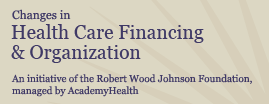The HCFO program ended in December 2016.
This site will no longer be updated, and some elements may not appear correctly.
The HCFO program ended in December 2016.
This site will no longer be updated, and some elements may not appear correctly.
Privacy Policy | Credits | Site Map
AcademyHealth is the national program office for HCFO, an initiative of the Robert Wood Johnson Foundation.
1666 K St NW, Suite 1100, Washington, DC 20006
Phone: 202.292.6700 Fax: 202.292.6800
All content Copyright © 2014 the Changes in Health Care Financing & Organization Initiative
